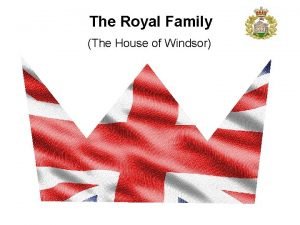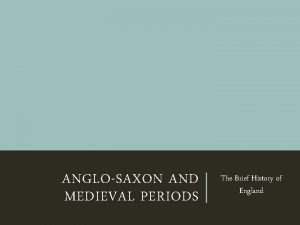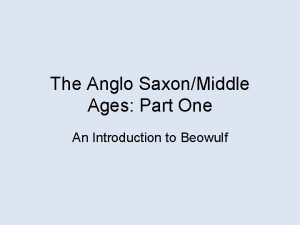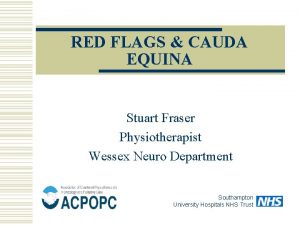Yoknaptawpha County Wessex An Analysis of the Progressive


















- Slides: 18

Yoknaptawpha County, Wessex An Analysis of the Progressive Ideals of William Faulkner and Thomas Hardy

An Unlikely Pairing of Authors

William Faulkner ● Born September 25 th, 1897 ● Died July 6 th, 1962 ● Was a Modernist author ● Known for his stream-of-consciousness and experimental style ● Awarded the Nobel Prize in Literature in 1949 ● Published The Unvanquished in 1938

Thomas Hardy ● Born June 2 nd, 1840 ● Died January 11 th, 1928 ● Was a notable Victorian author ● Know for his realism ● Was inspired by Romantic poetry and was a precursor to Modernism ● Published Tess of the D’Urbervilles in 1891

Both created microcosms for their worlds to exist within

Faulkner’s Yoknapatawpha County

Hardy’s Wessex County

But the similarities between the authors extend beyond their shared use of microcosms

Both authors utilize strong female characters to signify social change & create a dichotomy of an old culture and new culture to show progression

Use of strong female characters ● Strong female characteristics are present within Faulkner’s The Unvanquished in the character of Drusilla Hawk and within Hardy’s Tess of the D’Urbervilles in the character of Tess Durbeyfield

Drusilla Hawk ● Drusilla deliberately spruns conventional Antebellum Southern cultural norms imposed upon women ● Her actions and mannerisms aligned with stereotypical masculine ventures such as: ○ ○ ○ Riding horses Shooting guns Partaking in warfare ● Further, she dressed in men’s clothing and kept her hair cut short

Drusilla Hawk cont. ● Drusilla resisted the attempts of the other women to enculturate and habituate her into typical Southern society ● Her character is indicative of Faulkner’s beliefs concerning women’s rights ● Faulkner disagreed with contemporary Southern views on women’s rights and displayed his opinion through Drusilla’s character

Tess Durbeyfield ● The character of Tess within Hardy’s Tess of the D’Urbervilles goes against contemporary cultural norms imposed upon women during the time that Hardy was writing ● The character of Tess subverts the literary and cultural trope of the “Fallen Woman” ● The “Fallen Woman” narrative was common within Victorian literature and followed a particular pattern ○ Woman has sex, woman gets pregnant, man leaves, women has child, child dies, woman

Tess Durbeyfield cont. ● Tess does not subscribe to the conventional trope of the fallen women by having a liberated life after the death of her child and although she does die in the end, it is on her own terms after exacting revenge on her abuser ● Hardy’s depiction of Tess as a strong female character is representative of his thoughts towards the popular notion of the “Fallen Woman” in Victorian society

Both authors include an emergent culture and a dying culture to signify societal change

The Unvanquished ● Present within The Unvanquished is the cultural notions of the “Old South” and the “New South” ● “Old South” culture is the culture of the South pre-Civil War and “New South” is the emerging culture post-Civil War ● The novel takes place before, during, and after the Civil War and in doing so showcases elements of both cultures ● Faulkner’s camp is on the side of the emergent “New South” which showcases his views on the ideas of cultural change

Tess of the D’ Urbervilles ● Present within Hardy’s novel is the remnant pagan world and the prominent Christian world ● Pagan influences found within the country folk, including Tess’ mother ● These people are the minority in a predominantly Christian society ● Hardy’s inclusion of this highlight his point to show that all culture develops, but includes roots of the previous culture

In summary, despite their geographic differences and differing ages, Faulkner and Hardy share significant thematic similarities concerning there specific (but remarkably similar) contemporary cultures
 Windsor family tree
Windsor family tree Wessex sales management simulation
Wessex sales management simulation Sussex and wessex
Sussex and wessex Wessex maternity academy
Wessex maternity academy Essex wessex mercia northumbria
Essex wessex mercia northumbria Anglo-saxon feudal system
Anglo-saxon feudal system Pains wessex epirb battery replacement
Pains wessex epirb battery replacement Beowulf time period
Beowulf time period Wessex deanery
Wessex deanery Wessex neurological centre
Wessex neurological centre Progressive passive
Progressive passive Simple past tense and past progressive
Simple past tense and past progressive Function of past perfect tense
Function of past perfect tense Hát kết hợp bộ gõ cơ thể
Hát kết hợp bộ gõ cơ thể Ng-html
Ng-html Bổ thể
Bổ thể Tỉ lệ cơ thể trẻ em
Tỉ lệ cơ thể trẻ em Gấu đi như thế nào
Gấu đi như thế nào Chụp tư thế worms-breton
Chụp tư thế worms-breton

































